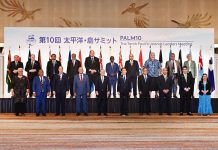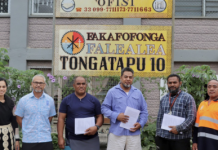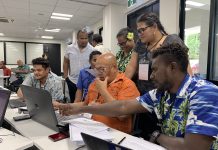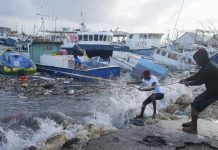By Ryan Orgera, Global Director, Accountability.Fish
If you’ve eaten a tuna sandwich or salad, there’s a good chance your meal was caught in the western and central Pacific Ocean.
That area of the globe produces nearly 60 percent of the worldwide catch of skipjack tuna, the tuna often found in cans and sold as ‘chunk light’ on store shelves in the United States, or as “tuna in water” or “tuna in oil” in other parts of the world.
With all of the concerning reports of fish stocks plummeting, you might wonder if your lunch is sustainable, or not.
The truth is, that we don’t know.
That’s because the Western and Central Pacific Fisheries Commission (WCPFC), which governs 60 percent of the world’s tuna supply, conducts its most critical compliance meeting in secret. The membership of the WCPFC includes countries which fish, or sell fishing rights, in a swath of the Pacific Ocean spreading from Australia to Hawaii.
This week, we’ve sent our communication lead, Mike Klein, to this WCPFC compliance meeting to see if he can get through the door, along with the other observers who made the trek to Pohnpei, Micronesia, where the meeting is taking place.
Before we applied for observer status for this year’s meeting, the WCPFC’s executive director, Rhea Moss-Christian, said “Openness relies on trust.”
But in our view, Moss-Christian and the WCPFC have it backwards.
Accountability relies on openness, and without accountability, there can be no sustainability.
To be sustainable implies a natural resource is not only available to meet our needs today, but that our current use of that resource won’t compromise its availability to meet the needs of the future.
Inherent in making industrial fishing sustainable is the necessity to set clear, transparent rules so everybody knows what’s expected of them and the extent to which governments – which by international law must oversee their flagged fishing vessels – can be held to account for how they are doing.
Time to finish the job
The nations involved in fishing for this tuna came part of the way to mandating such rules last year. Now it’s time for them to finish the job.
The management of this international stock is agreed at various meetings of the WCPFC, and particularly, the compliance committee which has taken on the habit of having secret meetings.
After years of hard work and contentious conversations, nations that are part of the WCPFC agreed on key elements of a management procedure for skipjack tuna last year.
A management procedure is a modern way to ensure stock sustainability. It includes a set of clear, science-based, and pre-agreed rules that trigger automatic actions to govern how much fish can be caught to keep the skipjack tuna stock at a level that is good for the fish and fishermen.
But it only has value if it’s actually adhered to. But in a head-scratching turn, WCPFC members didn’t take the extra step to agree to actually use it to set binding catch and effort levels in the skipjack tuna fishery. Instead, WCPFC members must merely take the management procedure output “into account” when setting fishing opportunities for skipjack. So it’s essentially a guideline – a piece of paper with no teeth behind it.
Moreover, the WCPFC’s unwillingness to allow non-industry observers into its Compliance meetings means that there is no way to verify whether industrial fishers are doing anything more than “noting” the guidelines as we have no visibility of the actual volumes being caught.
Until members agree to implement the management procedure – and conduct its compliance committee meetings in front of its accredited external observers, it’s just more of the same in the WCPFC, and the future health of our tuna resources are at stake.
SOURCE: ACCOUNTABILITY.FISH/PACNEWS















